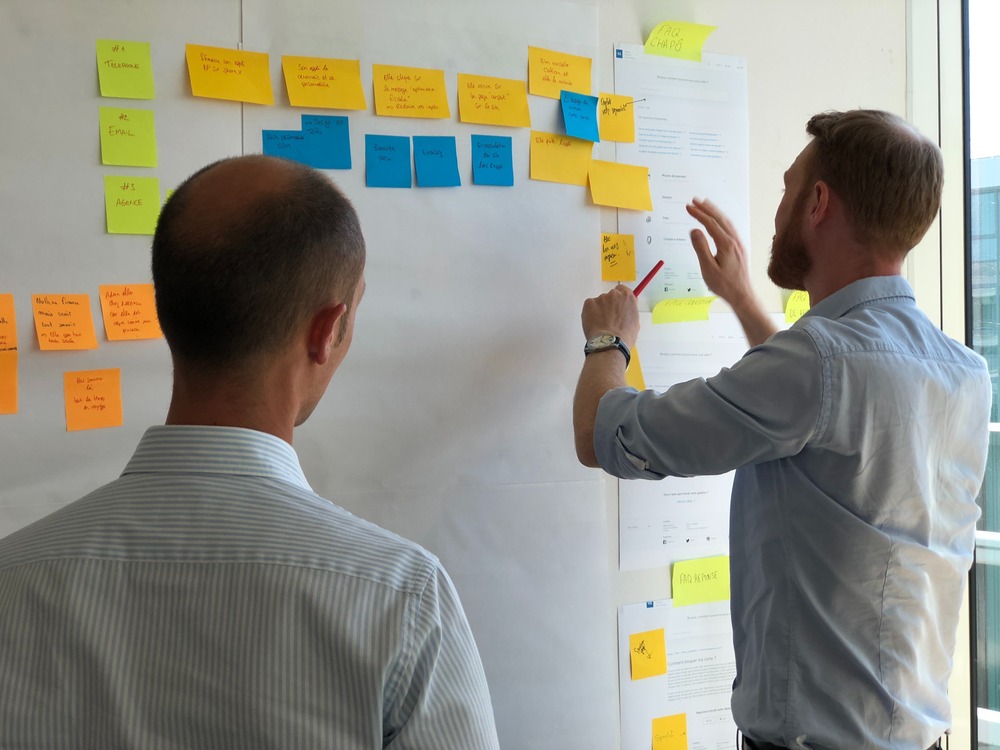In the realm of product development, there exists a symbiotic partnership that is essential for success: the relationship between product designers and product managers. These two key roles play a pivotal role in shaping the destiny of a product, and their collaboration can either lead to groundbreaking innovations or unfortunate missteps. In this comprehensive exploration, we delve into the intricacies of this partnership, shedding light on how these professionals work together to create exceptional products.
Understanding the Roles
Before we dive into the dynamics of their collaboration, let’s take a moment to understand the distinct roles of product designers and product managers.
Product Designers
Product designers are the visionary artists behind the aesthetics and functionality of a product. They are responsible for bringing ideas to life through sketches, prototypes, and ultimately, the final design. These creative minds are driven by a deep understanding of user experience (UX) and user interface (UI) design principles. Their primary goal is to craft a product that not only looks visually appealing but also delivers a seamless and enjoyable user journey.
Product Managers
On the other side of the spectrum, we have product managers who are the strategic architects of a product’s roadmap. They are the ones who decide what features should be included, prioritize tasks, and ensure that the product aligns with the overall business strategy. Product managers act as the bridge between various stakeholders, translating customer needs into actionable plans for the development team. Their focus is on the “big picture” and ensuring that the product meets market demands.
The Collaborative Dance
Now that we have a grasp of their individual roles, let’s explore how product designers and product managers collaborate to transform concepts into tangible products.
1. Ideation and Conceptualization
The journey begins with an idea, often sparked by market research or customer feedback. Product managers initiate this process by identifying opportunities and gaps in the market. Once a potential project takes shape, they engage with product designers to conceptualize how the product could look and function.
2. Defining Objectives and Constraints
Collaboration thrives on clear communication. Product managers lay out the project’s objectives, target audience, and constraints. This information acts as a compass for product designers, guiding them in the right direction as they start sketching and wireframing.
3. Prototyping and Iteration
Product designers take the reins at this stage, creating initial prototypes that embody the vision discussed. These prototypes serve as a visual reference and allow both parties to assess if the concept aligns with the defined objectives. Feedback loops are crucial here, as multiple iterations may be required to fine-tune the design.
4. Design Handoff
Once the design reaches a refined state, product designers hand it off to product managers. This transition involves a detailed explanation of design decisions and how they relate to user experience and product goals. Product managers then take charge of aligning the design with development timelines and resource allocation.
5. Development and Testing
With the design in the hands of developers, product managers closely monitor the progress, ensuring that the final product adheres to the established vision. Simultaneously, product designers may be consulted for clarifications or adjustments, maintaining a seamless flow of communication.
6. Launch and Beyond
The collaborative efforts of product designers and product managers culminate in the product’s launch. However, the relationship doesn’t end there. Both parties continue to work closely post-launch, collecting user feedback, monitoring performance, and making necessary improvements.
The Power of Synergy
The success of this partnership lies in the synergy between product designers and product managers. When they work in harmony, the outcomes are remarkable:
- Innovation: Product designers bring fresh ideas to the table, while product managers ensure these ideas align with business objectives, resulting in innovative and market-driven products.
- Efficiency: Clear communication and a shared vision reduce misunderstandings and rework, streamlining the product development process.
- User-Centricity: By integrating user insights into the design, products become more user-friendly and responsive to customer needs.
- Market Relevance: The collaboration ensures that the product remains relevant in a rapidly evolving market, adapting to changing demands and technologies.
In Conclusion
The relationship between product designers and product managers is a dynamic and essential partnership that fuels the engine of innovation. Their collaborative efforts, from ideation to launch and beyond, shape the products we interact with daily. This alliance not only enhances the quality of the end product but also contributes significantly to its success in the market.
As we navigate the ever-evolving landscape of product development, it becomes evident that the synergy between these two roles is not just a choice but a necessity. Together, they drive progress, inspire creativity, and lead the way in creating products that leave a lasting impact
Frequently Asked Questions
1. What are the distinct roles of product designers and product managers?
Answer: Product designers are responsible for the aesthetics and functionality of a product, focusing on user experience and user interface design. They bring ideas to life through sketches and prototypes. Product managers, on the other hand, are strategic architects who decide on features, prioritize tasks, and align the product with the overall business strategy. They act as a bridge between stakeholders, translating customer needs into actionable plans.
2. How do product managers initiate the product development process?
Answer: Product managers initiate the process by identifying opportunities and gaps in the market based on market research or customer feedback. They engage with product designers to conceptualize how the product could look and function.
3. What role does clear communication play in the collaboration between product designers and product managers?
Answer: Clear communication is essential in the collaboration between product designers and product managers. Product managers lay out project objectives, target audience, and constraints, providing a compass for product designers. Feedback loops are crucial during prototyping and iteration stages to fine-tune the design.
4. What happens during the design handoff from product designers to product managers?
Answer: During the design handoff, product designers explain design decisions and how they relate to user experience and product goals. Product managers take charge of aligning the design with development timelines and resource allocation.
5. How do product managers ensure the final product aligns with the established vision?
Answer: Product managers closely monitor the progress during development and testing, ensuring that the final product adheres to the established vision. They may consult with product designers for clarifications or adjustments, maintaining a seamless flow of communication.
6. What happens after the product’s launch in the collaboration between product designers and product managers?
Answer: After the product’s launch, both product designers and product managers continue to work closely. They collect user feedback, monitor performance, and make necessary improvements to ensure the product remains relevant and user-friendly.
7. What are the key benefits of the synergy between product designers and product managers?
Answer: The synergy between product designers and product managers results in several benefits, including innovation through alignment with business objectives, efficiency through clear communication, user-centric product design, and maintaining market relevance by adapting to changing demands and technologies.





